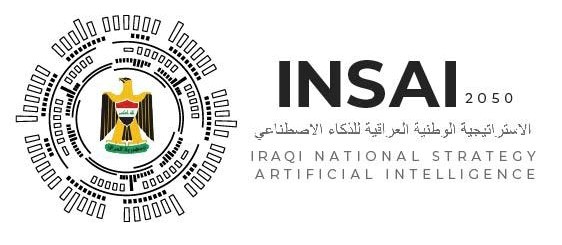Equipping 100 schools with artificial intelligence laboratories
- Background and objectives
- Parties concerned with implementation
- measures taken
- Components of a smart laboratory in each school, a preliminary proposal
- Strategic objectives of the project
- expected challenges
- recommendations suggested

First: Background and objectives
Based on the Prime Minister's directive during the meeting of the Supreme Committee for Artificial Intelligence, which stipulates equipping each school with a smart laboratory that enhances students' ability to keep pace with the developments of the Fourth Industrial Revolution, the implementation phase of a national project has begun, aiming to equip 100 primary and middle schools in Iraqi villages and rural areas with integrated artificial intelligence laboratories.
Second: Parties concerned with implementation
The project is implemented in coordination and cooperation between the following entities:
* Ministry of Education to identify target schools and ensure educational and administrative readiness.
* The Media and Communications Authority is the technical body responsible for digital infrastructure and providing technical equipment.
* Government communication team to coordinate media and awareness efforts and document implementation stages.
* The Supreme Committee for Artificial Intelligence provides strategic supervision and periodic follow-up to ensure the project's alignment with national objectives.
Third: Actions taken
Identify target schools:
* 100 schools were selected, distributed across remote areas in villages and rural areas, with the aim of bridging the digital divide between cities and rural areas.
* A list of names and geographical locations has been sent to the Information and Communications Authority.
Technical communication:
Direct and frequent communication took place with the Media and Communications Authority to coordinate technical and logistical aspects.
The Authority was informed that it had assigned the Comprehensive Service Department to prepare a detailed feasibility study that includes:
* The required financial cost.
* Suggested devices and equipment.
* Required infrastructure: Internet networks, backup power.....
* The estimated time period for completing the entire project.
Fourth: Components of the smart laboratory in each school, a preliminary proposal
1. Modern computers: 10-15 devices per school.
2.Smart Board or large LED display.
3.Local Server or cloud connection for AI education platform.
4. Fast and stable internet connection supported by alternative communication technologies in underserved areas.
5.Specialized digital educational content including:
* Programming for children block coding
* Principles of artificial intelligence
* Virtual reality applications and educational robots
* Interactive smart furniture that supports active learning methods.
Fifth: Strategic objectives of the project
* Integrating artificial intelligence concepts into rural education.
* Providing a stimulating and fair learning environment for all students, regardless of their geographical location.
* Raising the level of digital skills among students and teachers.
* Achieving digital justice as part of Iraq's vision for comprehensive digital transformation.
* Building a generation capable of dealing with future technologies.
Sixth: Expected challenges
* Weak technological infrastructure in some rural areas.
* Lack of personnel trained to operate smart laboratories.
* The need for sustainable maintenance and continuous updating of equipment.
Seventh: Proposed recommendations
* Expedite the completion of the technical feasibility study by the Media and Communications Authority.
* Allocate an initial operating budget to implement the first phase, model 10-20 schools.
* Organizing training programs for educational personnel before operating laboratories.
* Preparing a future expansion plan that includes 1,000 schools by 2026, based on the success of the current phase.
* Involve the private sector and international partners in financing or providing certain CSR CSR technologies.

